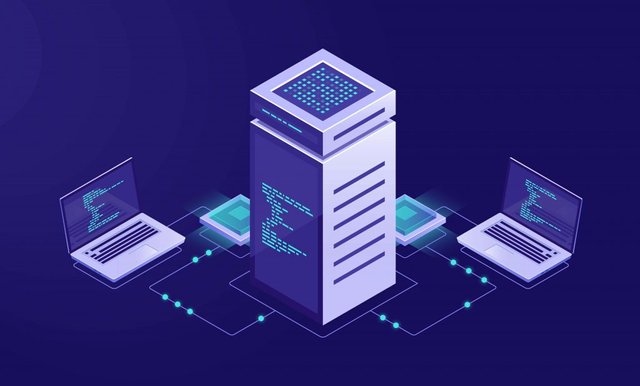PHP Vs. Angular: What Should Developers Choose In 2021?
Every developer aims to create internet apps and websites that scale well and have Fort Knox-level security. And each consumer requires the use of such a product. As a result, selecting the most appropriate and dependable technologies for your projects is critical. Both Angular and PHP have applied sciences, and thus this can create confusion as to what can be the best option for developers to choose from in 2021.
So, before we move to compare them, let us first understand what PHP and Angular are.
What Is Angular Framework?
Angular is an open-source framework that is TypeScript based and used to build applications for desktops and websites.
The Angular project was directed by the Angular Team at Google and built with the aid of a large community of businesses and individuals. Angular is also known as “Angular 2+” or “Angular v2 and above” because it is a complete rebuild of AngularJS (Angular 1).
It was released in 2016 under an MIT license and is mainly used for front-end web development.
Angular is component-based, and this internet framework can help you to build scalable website applications efficiently. It also offers several built-in libraries that cover various important features such as document control, client-server communication, routing, and more.
What Is PHP Framework?
PHP is a recursive acronym, and at the beginning, it was defined as Personal Home Page, but currently, it is known as Hypertext Pre-processor. PHP is a general-purpose scripting language for the purpose of server-side web development.
A Danish-Canadian programmer named Rasmus Lerdorf created the PHP in the year 1994. PHP is currently developed and maintained by The PHP Development Team and Zend Technologies. Under the PHP License, the standard PHP instrument is unrestricted. PHP was first released in 1995, and ever since its release, its dedicated development community has significantly influenced several improvements. As a result, PHP 8 is the most recent significant PHP model.
Generally, the interpretation of the PHP code is conducted on a server with the aid of a PHP interpreter, and the code is executed as a module, daemon, or executable CGI. Ultimately, it influences an HTTP response. PHP scripts run on various platforms, including Linux, Unix, Solaris, Microsoft Windows, MAC OS, and others. It can also be used with a variety of web servers, such as Apache and IIS.
PHP Vs Angular: Comparison
In comparing PHP vs Angular, it is critical to understand Angular and PHP before analyzing them. This article will help clarify the debate between PHP and Angular and will assist you in selecting the most appropriate technology for your next project.
1. Server-Side Scripting V. Client-Side Scripting: PHP Vs Angular
Angular is a client-side framework that operates on the smartphones, laptops, desktops of the users instead of servers. Thus, it requires programming language for the purpose of server-side scripting.
PHP is a server-side scripting programming language that indicates that the PHP code is written on a web server, which results in an HTML response. PHP enables you to send dynamic content to clients, most commonly from a database as a server-side programming language. It could be useful in construction-related e-commerce apps.
2. Database Integration: PHP Vs Angular
Because Angular is a client-side web application framework, it executes its code in a browser rather than a database server or application server. Unlike JavaScript, Angular doesn’t have any form of direct access to any local computer, and thus, the use of Angular with a database is not possible immediately.
On the other hand, PHP works well with a variety of databases, including MySQL and MariaDB. Furthermore, a slew of PHP frameworks allows for simple database interaction, allowing you to discover, type, and filter information before delivering it to the customer.
3. Threading Approaches: PHP Vs Angular
Threading can be defined as the instructions or the directions that are given to a programming language. A thread is a component of a computer program that may run on its own. A single thread functions like a sequential program with a beginning, execution, and conclusion. It is no longer a complete program, but it does execute within a specific part of the system.
Multi-threaded approaches, on the other hand, can significantly improve app functioning. This is because they may perform multiple tasks at the same time within a software. Web browsers are a perfect example of multi-threaded software. You can navigate a web page as the browser downloads an image, prints pages in the backdrop as you get fresh pages, or simultaneously play music and animations.
Threads aren’t available in Angular to help you organize your code and run concurrent activities. However, it works in a browser that supports JavaScript on the client end. You can make use of internet employees who are background threads that run in parallel with the main threads to do intensive computations and assist in the development of program functionality. Angular CLI allows you to create and work with online employees.
PHP is a multi-threaded programming language that indicates its capability of handling multi-tasks in one go. For the purpose of multi-threading in PHP, there is also the presence of an object-oriented API called “pthreads”, which provides for additional tools. But alternatively, you also have the option of using parallel. Threaded Objects, Threads, and Workers are thus simple to learn, write, construct, synchronize, and run in PHP projects.
Compare briefly from source URL: PHP Vs. Angular: What Should Developers Choose In 2021?


PHP is still being used, although more are moving to Angular.
There is no "which one". It depends on which types of projects we will be focusing on in our carreer.